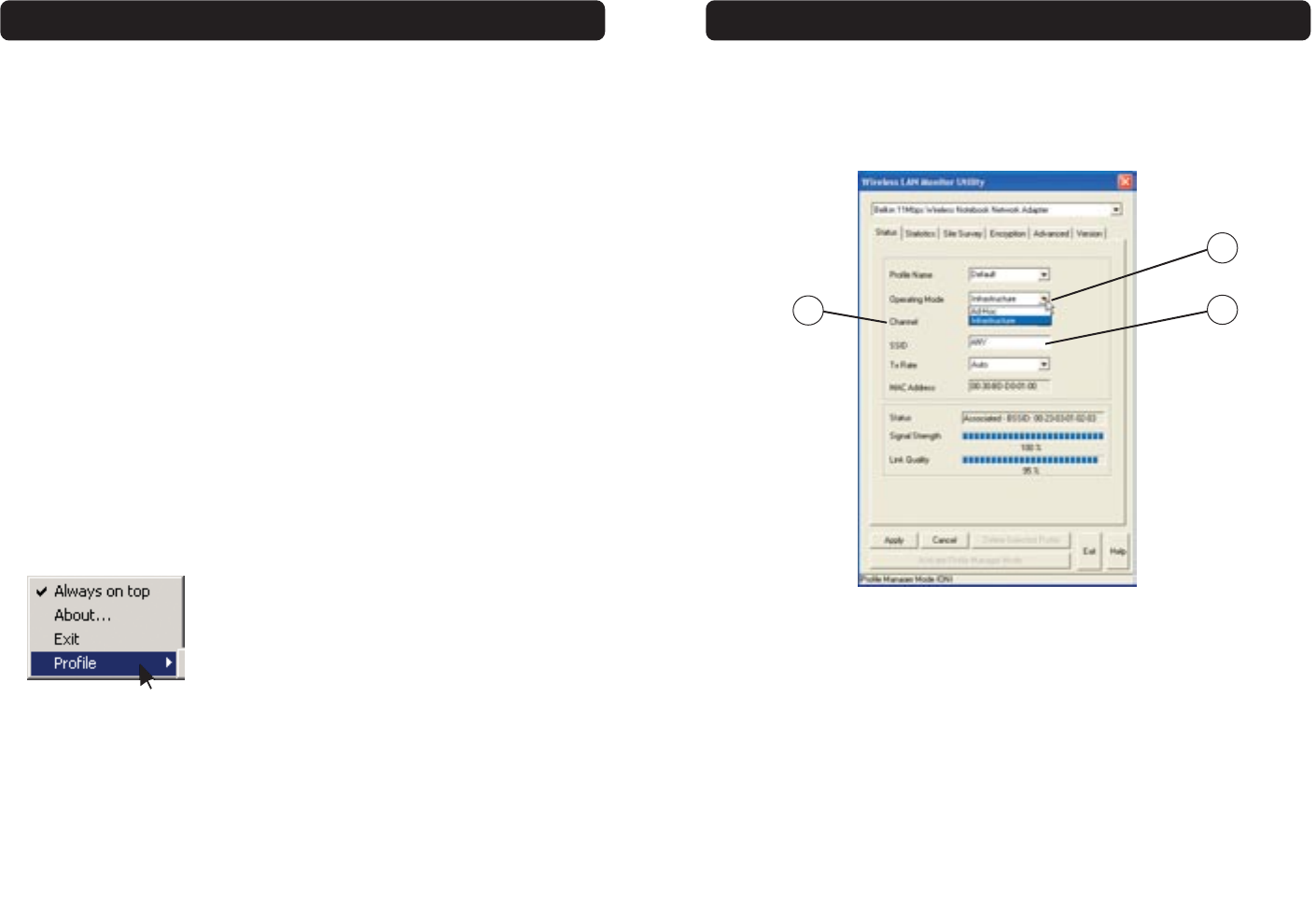
20
USING THE BELKIN WIRELESS LAN MONITOR UTILITYUSING THE BELKIN WIRELESS LAN MONITOR UTILITY
Creating a Profile
Before you can use the Profile Manager, you need to create a profile. Follow
these steps to create a profile.
1. If not already, turn ON the Profile Manager mode by pressing the “Activate
Profile Manager Mode” button. (c).
2. The “Profile Name” field (a) will become active. Click inside of the
Profile Name field and type in the name you want to call the profile, such
as “Home”.
3. At this point, you now need to set the rest of the parameters for the
network that you will be connecting to. Set the Operating Mode, Encryption
settings, Network Type, SSID, etc. When you have finished making these
settings, click “Apply” (b).
A profile with the name you chose now exists in the Profile Manager. You can
select this profile quickly and easily any time you need to use it.
Choosing a Profile
You can quickly and easily choose a profile any time you need it. There are
two methods to do so.
Quick Pick
1. Right-click the Utility icon in the task bar.
2. Place your cursor over “Profile”. A list of the profiles you have created will
appear. Move the cursor over the profile that you want to use and left-click
on the name. The profile you just selected will become active.
Choosing from the Utility
1. Make sure Profile Manager mode is on.
2. Click the down-facing arrow next to “Profile Name”. A list of all of the
profiles you have created will appear. Click on the name of the profile you
want to use.
3. Click “Apply”. The profile you just selected will become active.
21
Operating in Ad-Hoc Mode
Ad-Hoc mode is a peer-to-peer mode (computer-to-computer). To set two or
more computers to communicate directly with each other, follow these steps:
1. Select “Ad-Hoc” from the “Operating Mode” box (a).
2. Enter the channel you want to use in the “Channel” box (b). You can
choose any one of the available channels you wish.
3. In the SSID field (c), type in the name you want to use to identify the
Ad-Hoc network. You can name this anything you want.
4. Click “Apply” to save the changes. When the Card is in Ad-Hoc mode, the
“Status” box (d) will say “Ready”.
NOTE: The Signal Strength and Link Quality indicators do not work in
Ad-Hoc mode.
a
b
c
